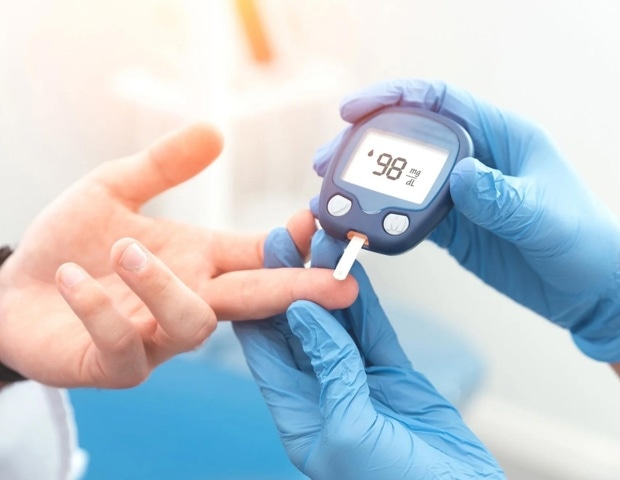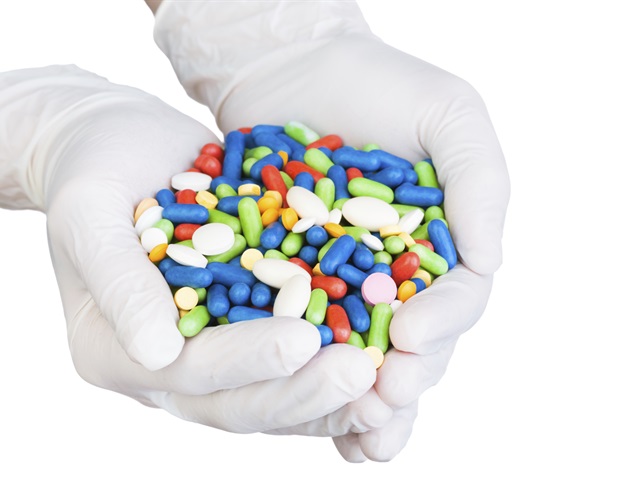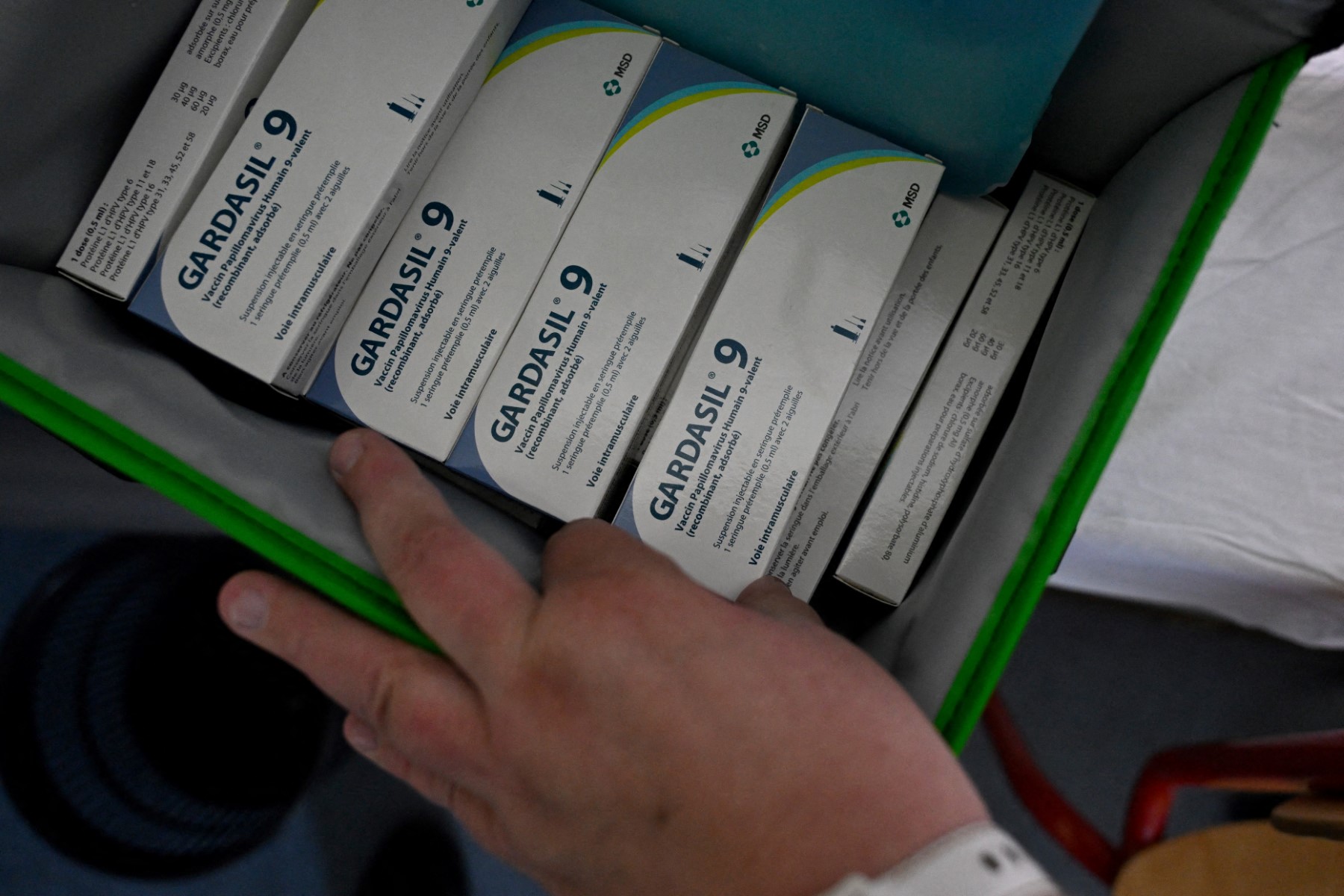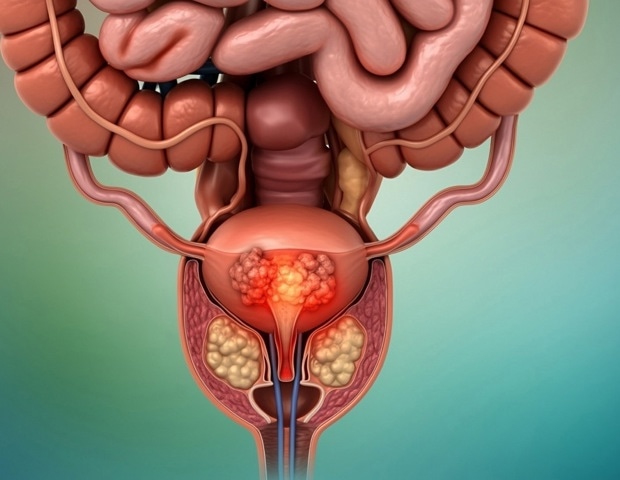Pialoux G, Gaüzère B-A, Jauréguiberry S, Strobel M. Chikungunya, an epidemic arbovirosis. Lancet Infect Dis. 2007;7:319–27.
PubMed
Google Scholar
Kularatne SAM, Gihan MC, Weerasinghe SC, Gunasena S. Concurrent outbreaks of chikungunya and dengue fever in Kandy, Sri Lanka, 2006–07: a comparative analysis of clinical and laboratory features. Postgrad Med J. 2009;85:342–6.
CAS
PubMed
Google Scholar
Volk SM, Chen R, Tsetsarkin KA, Adams AP, Garcia TI, Sall AA, et al. Genome-scale phylogenetic analyses of chikungunya virus reveal independent emergences of recent epidemics and various evolutionary rates. J Virol. 2010;84:6497–504.
CAS
PubMed
PubMed Central
Google Scholar
Delisle E, Rousseau C, Broche B, Leparc-Goffart I, L’Ambert G, Cochet A, et al. Chikungunya outbreak in Montpellier, France, september to october 2014. Eurosurveillance. 2015;20(17):21108. https://doi.org/10.2807/1560-917.es2015.20.17.21108. PMID: 25955774.
Leparc-Goffart I, Nougairede A, Cassadou S, Prat C, De Lamballerie X. Chikungunya in the Americas. Lancet. 2014;383:514.
PubMed
Google Scholar
Diallo D, Sall AA, Buenemann M, Chen R, Faye O, Diagne CT, et al. Landscape ecology of sylvatic chikungunya virus and mosquito vectors in southeastern Senegal. PLoS Negl Trop Dis. 2012;6: e1649.
PubMed
PubMed Central
Google Scholar
Russo G, Subissi L, Rezza G. Chikungunya fever in Africa: a systematic review. Pathog Glob Health. 2020;114:136–44.
PubMed
PubMed Central
Google Scholar
Althouse BM, Hanley KA, Diallo M, Sall AA, Ba Y, Faye O, et al. Impact of climate and mosquito vector abundance on sylvatic arbovirus circulation dynamics in Senegal. Am J Trop Med Hyg. 2015;92:88–97.
PubMed
PubMed Central
Google Scholar
Sow A, Loucoubar C, Diallo D, Faye O, Ndiaye Y, Senghor CS, et al. Concurrent malaria and arbovirus infections in Kedougou, southeastern Senegal. Malar J. 2016;15(47):1–7.
Google Scholar
Peyrefitte CN, Rousset D, Pastorino BAM, Pouillot R, Bessaud M, Tock F, et al. Chikungunya virus, Cameroon, 2006. Emerg Infect Dis. 2007;13:768–71.
PubMed
PubMed Central
Google Scholar
Leroy EM, Nkoghe D, Ollomo B, Nze-Nkogue C, Becquart P, Grard G, et al. Concurrent chikungunya and dengue virus infections during simultaneous outbreaks, Gabon, 2007. Emerg Infect Dis. 2009;15:591–3.
PubMed
PubMed Central
Google Scholar
Sow A, Nikolay B, Faye O, Cauchemez S, Cano J, Diallo M, et al. Changes in the transmission dynamic of chikungunya virus in southeastern Senegal. Viruses. 2020;12:196.
CAS
PubMed
PubMed Central
Google Scholar
Lim JK, Ridde V, Agnandji ST, Lell B, Yaro S, Yang JS, et al. Seroepidemiological reconstruction of long-term chikungunya virus circulation in Burkina Faso and Gabon. J Infect Dis. 2023;227:261–7.
PubMed
Google Scholar
Senegal: elevated chikungunya activity reported in the Kedougou region through august /update 1. Senegal: elevated chikungunya activity reported in the Kedougou region through august /update 1 | Crisis24. https://crisis24.garda.com/alerts/2023/08/senegal-elevated-chikungunya-activity-reported-in-the-kedougou-region-through-august-update-1. Accessed 15 Feb 2024.
Dieng I, Sadio BD, Gaye A, Sagne SN, Ndione MHD, Kane M, et al. Genomic characterization of a reemerging chikungunya outbreak in Kedougou, southeastern Senegal, 2023. Emerg Microbes Infect. 2024;13: 2373308.
PubMed
PubMed Central
Google Scholar
Vazquez-Prokopec GM, Galvin WA, Kelly R, Kitron U. A new, cost-effective, battery-powered aspirator for adult mosquito collections. J Med Entomol. 2009;46:1256–9.
PubMed
Google Scholar
Edwards FW. Mosquitoes of the Ethiopian region. III.-Culicine adults and pupae. 1941.
Ferrara L, Germain M, Hervy J-P. Aedes (Diceromyia) furcifer (Edwards, 1913) et Aedes (Diceromyia) taylori Edwards, 1936: le point sur la différenciation des adultes. Cah ORSTOM Ser Ent Med Parasitol. 1984;22:179–83.
Google Scholar
Huang Y-M, Ward RA. A pictorial key for the identification of the mosquitoes associated with yellow fever in Africa. Mosq Syst. 1981;13:138–49.
Google Scholar
Diagne N, Fontenille D, Konate L, Faye O, Lamizana MT, Legros F. Les anophèles du Sénégal: liste commentée et illustrée. Bull Soc Pathol Exot. 1994;87:267–77.
CAS
PubMed
Google Scholar
Robert V, Ndiaye EH, Rahola N, Le Goff G, Boussès P, Diallo D, et al. Clés dichotomiques illustrées d’identification des femelles et des larves de moustiques (Diptera : Culicidae) du Burkina Faso, Cap-Vert, Gambie, Mali, Mauritanie, Niger, Sénégal et Tchad. 2022;181. https://doi.org/10.23708/fdi:010084866.
Pastorino B, Bessaud M, Grandadam M, Murri S, Tolou HJ, Peyrefitte CN. Development of a TaqMan RT-PCR assay without RNA extraction step for the detection and quantification of African chikungunya viruses. J Virol Methods. 2005;124:65–71.
CAS
PubMed
Google Scholar
Kalantar KL, Carvalho T, de Bourcy CFA, Dimitrov B, Dingle G, Egger R, et al. IDseq—An open source cloud-based pipeline and analysis service for metagenomic pathogen detection and monitoring. GigaScience. 2020;9(giaa111):1–14.
CAS
Google Scholar
Nguyen L-T, Schmidt HA, von Haeseler A, Minh BQ. IQ-TREE: a fast and effective stochastic algorithm for estimating maximum-likelihood phylogenies. Mol Biol Evol. 2015;32:268–74.
CAS
PubMed
Google Scholar
Rambault A. FigTree (http://tree.bio.ed.ac.uk/software/figtree/). 2017.
Taufflieb R, Simonkovich E, Dieng PY. Enquête sur le vecteur urbain de fièvre jaune Aedes aegypti dans l’ouest du Sénégal. Multigraph Doc ORSTOM Dakar. 1972;20941.
Asia WHORO for S-E. Comprehensive guideline for prevention and control of dengue and dengue haemorrhagic fever. Revised and expanded edition. WHO regional office for South-East Asia; 2011.
Chang F-S, Tseng Y-T, Hsu P-S, Chen C-D, Lian I-B, Chao D-Y. Re-assess vector indices threshold as an early warning tool for predicting dengue epidemic in a dengue non-endemic country. PLoS Negl Trop Dis. 2015;9: e0004043.
PubMed
PubMed Central
Google Scholar
Biggerstaff B. PooledInRate, version 4.0: An Excel® add-in to compute infection rates from pooled data. Fort Collins CO Cent Dis Control Prev. 2016.
Dieng I, Ndiaye M, Kane M, Balde D, Mbanne M, Diop SMBS, et al. An amplicon-based Illumina and nanopore sequencing workflow for chikungunya virus west Africa genotype. 2023;:2023.12.07.23299611.
Madewell ZJ. Arboviruses and their vectors. South Med J. 2020;113:520–3.
CAS
PubMed
PubMed Central
Google Scholar
Diallo M, Tall A, Dia I, Ba Y, Sarr FD, Ly AB, et al. Yellow fever outbreak in central part of Senegal 2002: epidemiological findings. J Public Health Epidemiol. 2013;5:291–6.
Google Scholar
Diouf B, Gaye A, Dieng I, Diagne CT, Ndiaye EH, Mhamadi M, et al. Dengue 1 outbreak in Rosso, northern Senegal, October 2021: entomologic investigations. J Med Entomol. 2024;61:222–32.
CAS
PubMed
Google Scholar
Powers AM. Chikungunya. Clin Lab Med. 2010;30:209–19.
PubMed
Google Scholar
Mombouli J-V, Bitsindou P, Elion DOA, Grolla A, Feldmann H, Niama FR, et al. Chikungunya virus infection, Brazzaville, Republic of Congo, 2011. Emerg Infect Dis. 2013;19:1542–3.
PubMed
PubMed Central
Google Scholar
Gudo ES, Pinto G, Vene S, Mandlaze A, Muianga AF, Cliff J, et al. Serological evidence of chikungunya virus among acute febrile patients in southern Mozambique. PLoS Negl Trop Dis. 2015;9: e0004146.
PubMed
PubMed Central
Google Scholar
Sang RC, Ahmed O, Faye O, Kelly CLH, Yahaya AA, Mmadi I, et al. Entomologic investigations of a chikungunya virus epidemic in the Union of the Comoros, 2005. Am J Trop Med Hyg. 2008;78:77–82.
CAS
PubMed
Google Scholar
Agarwal A, Dash PK, Singh AK, Sharma S, Gopalan N, Rao PVL, et al. Evidence of experimental vertical transmission of emerging novel ECSA genotype of chikungunya virus in Aedes aegypti. PLoS Negl Trop Dis. 2014;8: e2990.
PubMed
PubMed Central
Google Scholar
Monath: The arboviruses: epidemiology and ecology – Google Scholar. https://scholar.google.com/scholar_lookup?title=The%20arboviruses%3A%20epidemiology%20and%20ecology&author=P%20Jupp&author=B%20McIntosh&author=T%20Monath&publication_year=1988&book=The%20arboviruses%3A%20epidemiology%20and%20ecology. Accessed 13 Oct 2024.
Jupp PG, McIntosh BM. Aedes furcifer and other mosquitoes as vectors of chikungunya virus at Mica, northeastern Transvaal, South Africa. J Am Mosq Control Assoc. 1990;6:415–20.
CAS
PubMed
Google Scholar
Paupy C, Ollomo B, Kamgang B, Moutailler S, Rousset D, Demanou M, et al. Comparative role of Aedes albopictus and Aedes aegypti in the emergence of dengue and chikungunya in central Africa. Vector-Borne Zoonotic Dis. 2010;10:259–66.
PubMed
Google Scholar
Diagne CT, Faye O, Guerbois M, Knight R, Diallo D, Faye O, et al. Vector competence of Aedes aegypti and Aedes vittatus (Diptera: Culicidae) from Senegal and Cape Verde archipelago for west African lineages of chikungunya virus. Am J Trop Med Hyg. 2014;91:635–41.
PubMed
PubMed Central
Google Scholar
Vazeille M, Yébakima A, Lourenço-de-Oliveira R, Andriamahefazafy B, Correira A, Rodrigues JM, et al. Oral receptivity of Aedes aegypti from Cape Verde for yellow fever, dengue, and chikungunya viruses. Vector-Borne Zoonotic Dis. 2013;13:37–40.
PubMed
Google Scholar
Cornet M, Chateau R, Valade M, Dieng P, Raymond H, Lorand A. Données bio-écologiques sur les vecteurs potentiels du. Virus amaril au Sénégal oriental. Rôle des différentes espéces dans la transmission du virus. Cah Orstom Entomol Méd Parasitol. 1978;16:315–41.
Google Scholar
Diouf B, Dia I, Sene NM, Ndiaye EH, Diallo M, Diallo D. Morphology and taxonomic status of Aedes aegypti populations across Senegal. PLoS ONE. 2020;15: e0242576.
CAS
PubMed
PubMed Central
Google Scholar
Brown JE, McBride CS, Johnson P, Ritchie S, Paupy C, Bossin H, et al. Worldwide patterns of genetic differentiation imply multiple ‘domestications’ of Aedes aegypti, a major vector of human diseases. Proc R Soc Lond B Biol Sci. 2011;278:2446–54.
Google Scholar
Nasidi A, Monath TP, DeCock K, Tomori O, Cordellier R, Olaleye OD, et al. Urban yellow fever epidemic in western Nigeria, 1987. Trans R Soc Trop Med Hyg. 1989;83:401–6.
CAS
PubMed
Google Scholar
Vazeille-Falcoz M, Failloux AB, Mousson L, Elissa N, Rodhain F. Oral receptivity of Aedes aegypti formosus from Franceville (Gabon, central Africa) for type 2 dengue virus. Bull Soc Pathol Exot. 1990;1999(92):341–2.
Google Scholar
Boorman JP, Service MW. Some records of mosquitoes (Culicidae, Diptera) from the Niger delta area, southern Nigeria. West Afr Med J. 1960;9:67–72.
CAS
PubMed
Google Scholar
Diouf B, Sene NM, Ndiaye EH, Gaye A, Ngom EHM, Gueye A, et al. Resting behavior of blood-fed females and host feeding preferences of Aedes aegypti (Diptera: Culicidae) morphological forms in Senegal. J Med Entomol. 2021;58:2467–73.
PubMed
Google Scholar
Agha SB, Chepkorir E, Mulwa F, Tigoi C, Arum S, Guarido MM, et al. Vector competence of populations of Aedes aegypti from three distinct cities in Kenya for chikungunya virus. PLoS Negl Trop Dis. 2017;11: e0005860.
PubMed
PubMed Central
Google Scholar
Jupp PG. Mosquitoes as vectors of human disease in South Africa. S Afr Fam Pract. 2005;47:68–72.
Google Scholar
Diallo M, Thonnon J, Traore-Lamizana M, Fontenille D. Vectors of chikungunya virus in Senegal: current data and transmission cycles. Am J Trop Med Hyg. 1999;60:281–6.
CAS
PubMed
Google Scholar
Paterson HE, McIntosh BM. Further studies on the Chikungunya outbreak in Southern Rhodesia in 1962. Ann Trop Med Parasitol. 1964;58(1):45–51.
PubMed
Google Scholar
Jupp PG, McIntosh BM, dos Santos I, de Moor P. Laboratory vector studies on six mosquito and one tick species with chikungunya virus. Trans R Soc Trop Med Hyg. 1981;75:15–9.
CAS
PubMed
Google Scholar
Diallo D, Fall G, Diagne CT, Gaye A, Ba Y, Dia I, et al. Concurrent amplification of Zika, chikungunya, and yellow fever virus in a sylvatic focus of arboviruses in southeastern Senegal, 2015. BMC Microbiol. 2020;20:181.
CAS
PubMed
PubMed Central
Google Scholar
Diallo M, Ba Y, Sall AA, Diop OM, Ndione JA, Mondo M, et al. Amplification of the sylvatic cycle of dengue virus type 2, Senegal, 1999–2000: entomologic findings and epidemiologic considerations. Emerg Infect Dis. 2003;9(3):362–7.
PubMed
PubMed Central
Google Scholar
Mondet B. Importance d’Aedes (Diceromyia) furcifer Edwards, 1913 (Diptera: Culicidae) parmi les vecteurs potentiels d’arboviroses, dans l’Épidémiologie de la Fièvre Jaune en savane sub-soudanienne de Côte-d’Ivoire. Annales de la Société entomologique de France (NS). 1997;33:47–54.
Google Scholar
Vanlandingham D, Hong C, Klingler K, Tsetsarkin K, Horne K, Powers A, et al. Differential infectivities of O’nyong-nyong and chikungunya virus isolates in Anopheles gambiae and Aedes aegypti Mosquitoes. Am J Trop Med Hyg. 2005;72:616–21.
PubMed
Google Scholar
Williams MC, Woodall JP. O’nyong-nyong fever: an epidemic virus disease in east Africa. II. Isolation and some properties of the virus. Trans R Soc Trop Med Hyg. 1961;55(2):135–41.
CAS
PubMed
Google Scholar
Williams MC, Woodall JP, Corbet PS, Gillett JD. O’nyong-nyong fever: an epidemic virus disease in east Africa. VIII. Virus isolations from Anopheles mosquitoes. Trans R Soc Trop Med Hyg. 1965;59(3):300–6.
CAS
PubMed
Google Scholar
Mutsaers M, Engdahl CS, Wilkman L, Ahlm C, Evander M, Lwande OW. Vector competence of Anopheles stephensi for O’nyong-nyong virus: a risk for global virus spread. Parasit Vectors. 2023;16:133.
PubMed
PubMed Central
Google Scholar
Tsetsarkin KA, Chen R, Weaver SC. Interspecies transmission and chikungunya virus emergence. Curr Opin Virol. 2016;16:143–50.
PubMed
PubMed Central
Google Scholar









